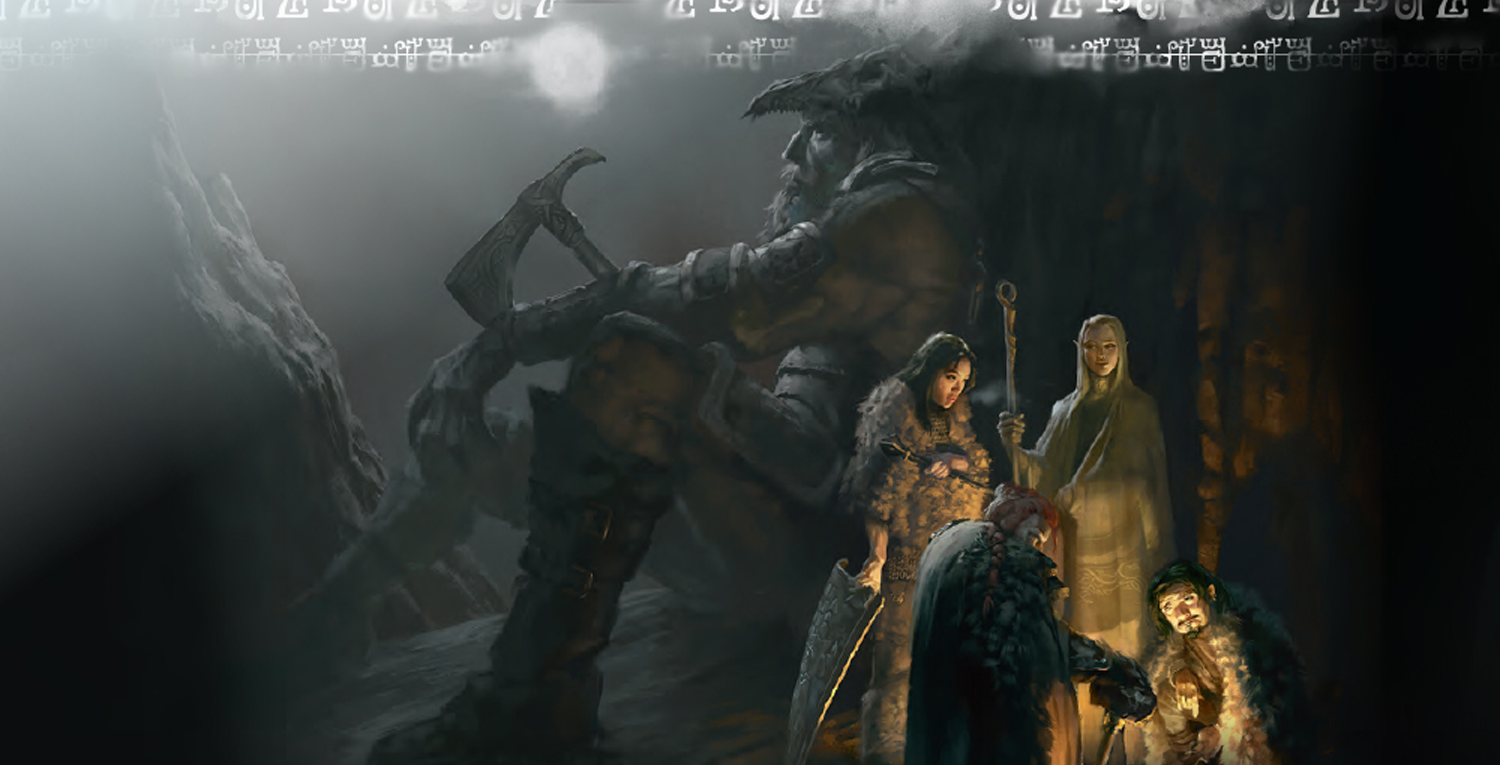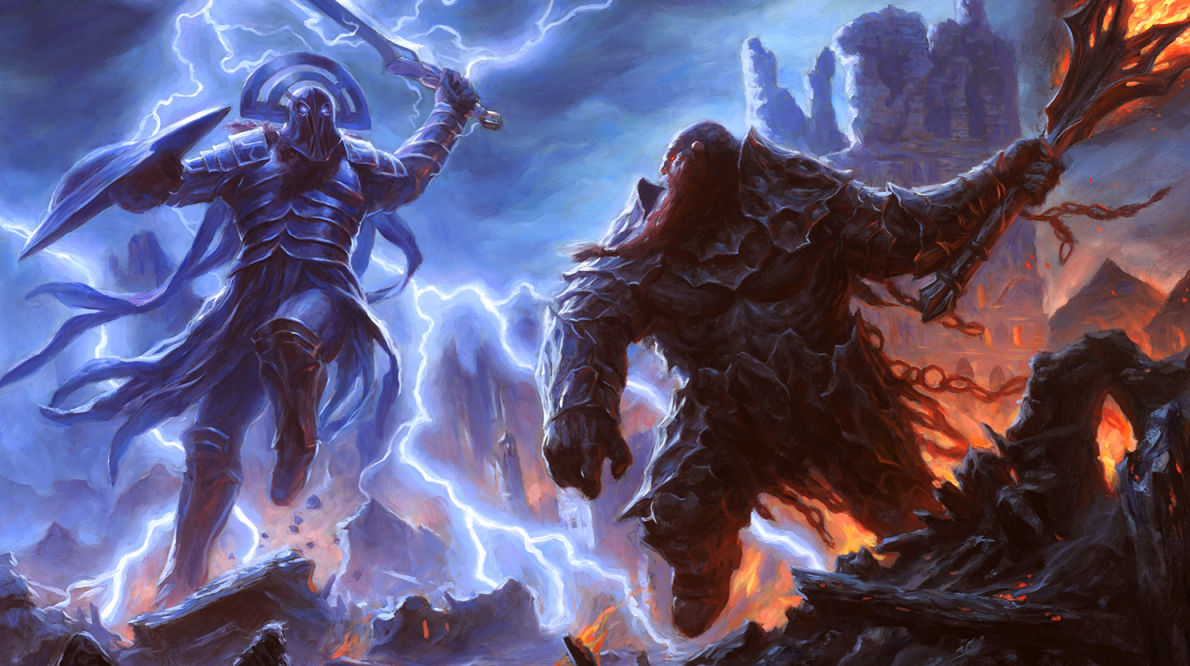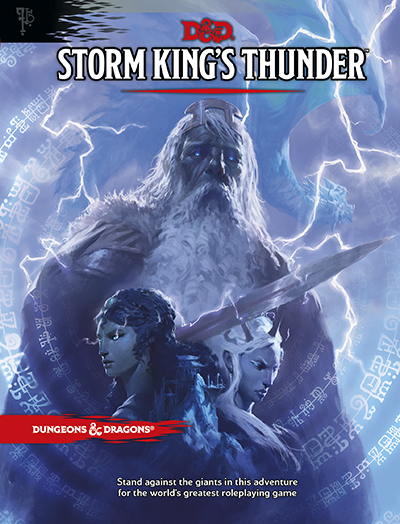 After its limited release a few weeks ago, Storm King’s Thunder is now finally available in stores everywhere. The physical book is a hardcover with 256 pages on glossy paper. Like all previous Wizards adventures, it has plenty of great art and full color maps. There are no fold outs or additional accessories included or necessary to play.
After its limited release a few weeks ago, Storm King’s Thunder is now finally available in stores everywhere. The physical book is a hardcover with 256 pages on glossy paper. Like all previous Wizards adventures, it has plenty of great art and full color maps. There are no fold outs or additional accessories included or necessary to play.
The story here is set in the Forgotten realms and is one of classic heroic fantasy. Storm King’s Thunder pits the players against the rampaging giant lords of the northern regions of the Sword Coast and as such, has a distinctly Nordic flavor. Throughout the adventure, the players will explore vast untamed wildlands complete with frozen oceans, snow caped mountains, dense forests, and ancient ruins. They will harness the ancient power of rune magic, encounter wild barbarians, battle giants, and take to the high seas in search of a way to stop a dangerous upheaval from destroying all that the ‘small folk’ hold dear. It stands out as one of the strongest published adventures for 5th edition to date, making both artistic and technical improvements upon its predecessors. The following review will have its spoilers marked below.
– GENERAL POINTS –
There are a few major reasons why Storm King’s Thunder stands out from the rest of the Wizards library and they all have to do with how content is presented. I have never encountered an official adventure that didn’t have tons of good ideas in it, but never before have those ideas been so clearly and cleanly articulated.
ORGANIZATIONAL SUPERIORITY
Right off that bat, it’s clear that this is the most well organized 5th edition adventure Wizards has ever made. Information is laid out in a way that makes each scenario very easy to navigate, making specifics easy to find at a moments notice.
For instance, chapter three contains a massive list of every relevant location in the book, presented in alphabetical order. This makes navigating all of the smaller settlements and map features a breeze, allowing the DM to go straight to any specific detail needed for overland travel.
 Each dungeon also has a Roster section, detailing every single monster’s location and what they do under certain conditions. This is the sort of thing that DMs would normally have to create for themselves in their own personal notes. This time, however, all the work is done for us and is presented in a simple and elegant manner.
Each dungeon also has a Roster section, detailing every single monster’s location and what they do under certain conditions. This is the sort of thing that DMs would normally have to create for themselves in their own personal notes. This time, however, all the work is done for us and is presented in a simple and elegant manner.
The scenarios do away with overly complicated ‘if-then’ situations which require the DM to search all over the place trying to find relevant information. Even if there are ‘if-then’ situations, they are usually written out all on the same page, rather than telling you to flip over to this page or that. Out of the Abyss had this problem at times. Gracklstugh, for instance, happened to be my favorite chapter of that adventure, but holy cow was it ever convoluted! I had to create my own visual flowchart just to keep all of the branching plot lines in order. It was a big mess of amazing ideas that were, unfortunately, very sloppily delivered. The scenarios in Storm King’s Thunder, however, are very straightforward and organized in a fairly linear fashion. This doesn’t mean the adventures are linear, however, as I will touch on more in the sections below.
As minor flourishes, the introduction even includes a graphical flowchart for the plot and a ‘dramatis personae’ for the characters. The flowchart is a nice visual representation of how the adventure is to be run at a glance and the dramatis personae makes is easy to look up any major character (and there are quite a few) quickly in alphabetical order. These are both the sorts of things that you would expect the community to generate out of necessity. Seeing this in the actual book makes me think that Wizards was more in touch this time around about what DMs want and how they can make running the adventure easier.
SANDBOX GAMEPLAY
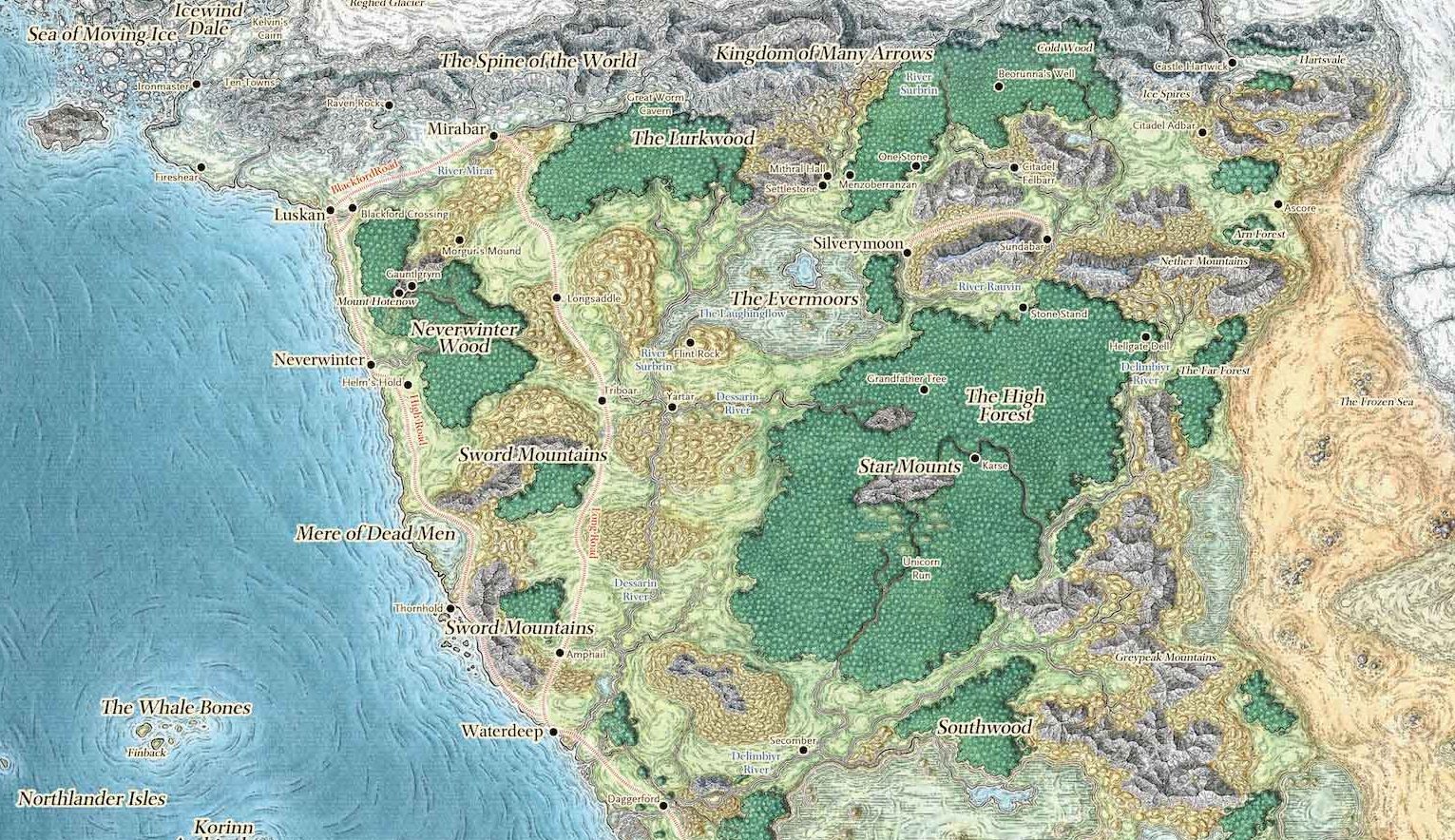 Another thing that Storm King’s Thunder does better than any other official 5th edition module is create a physical sandbox with its locations. Chapter three is largely responsible for this effect, which I will go into detail about in the sections below. Suffice it to say that players have never had more freedom to go in whichever direction they want and be guaranteed to find something awesome without fear of ruining the story. No matter where they go on the map and no matter how they choose to get there, there is always something interesting waiting there for them.
Another thing that Storm King’s Thunder does better than any other official 5th edition module is create a physical sandbox with its locations. Chapter three is largely responsible for this effect, which I will go into detail about in the sections below. Suffice it to say that players have never had more freedom to go in whichever direction they want and be guaranteed to find something awesome without fear of ruining the story. No matter where they go on the map and no matter how they choose to get there, there is always something interesting waiting there for them.
Locations on the map largely exist independently from the adventure’s main plot and there is no pre-established order that the players need to explore them in. This is what makes the world so believable. Its more than just a series of areas that all exist solely to further the immediate plot of the story. Even the locations and events that do tie into the plot can be (with a few major exceptions) encountered in almost any order. On top of that, there are a ton of purely optional side quests that can enhance the main story line, should the players be interested. This gives them more agency than ever before.
Other adventures try to act like sandboxes(Out of the Abyss and Curse of Strahd for example), but they ultimately fail because if certain locations are skipped or encountered out of order, the story becomes less effective or even ruined at certain points. When you play these adventures, it’s usually pretty clear that there is an intended order in which locations should be explored for the story to be at its best. Yes you could go out of order, but it just makes the game awkward. Take Out of the Abyss for example: if your players choose to skip Sloobludop and go in another direction, they will be missing out on a HUGE plot point, the rise of Demogorgon. He’s only the main villain of the entire campaign so… no big deal! Take Curse of Strahd as a second example: The game is clearly laid out so that the characters travel along a path that moves from east to west across the map and blocks them from moving south using mountains. Its not a sandbox. These adventures try to tell the players that they can go wherever they want, while simultaneously making it clear to the DM that they should be steered towards specific locations. That or the terrain just funnels them into a linear path.
Storm King’s Thunder doesn’t have this problem because it effectively creates a living breathing world that exists independently of the main plot. It also doesn’t prod the DM to artificially steer players here or there while simultaneously telling them that they are free to go where they like. When they are told they have a choice, they actually have a choice and they don’t have to worry that if they make the wrong choice they will screw up the story. Storm King’s Thunder may have a fairly linear plot, but its map is as close to a sandbox as we’ve seen so far. Once the players realize this, they might just get lost exploring all of these incredible places and side quests.
THE DEFINITIVE SWORD COAST ADVENTURE
I think its safe to say that I view this as being the best ‘Sword Coast adventure’ we’ve gotten for 5th edition so far. As I touched on earlier, it brings the setting alive in ways that adventures like Hoard of the Dragon Queen and Princes of the Apocalypse just aren’t capable of. Hoard of the Dragon Queen, for example, feels like you are riding through its setting with blinders on, unable to explore and experience too much beyond what exists solely to support the main plot. The difference between now and then is staggering.
There is so much sheer content in this book that a single playthrough would barely scratch the surface. You could run a whole campaign based on chapter three alone. It presents a ton of great ideas which can naturally lead the players from one area to the other without feeling disjointed or restrictive. Each region presented here, has all sorts of little locations and encounters that give glimpses of what local life is like and how that region is different from the rest. This is what makes it all more believable this time around. In fact, using random encounters at all seems a bit lame when you’ve got a whole map full of handcrafted locations, NPCs and encounters to use instead. Storm King’s Thunder doesn’t encompass the entire Sword Coast, but the areas it does depict are presented beautifully.
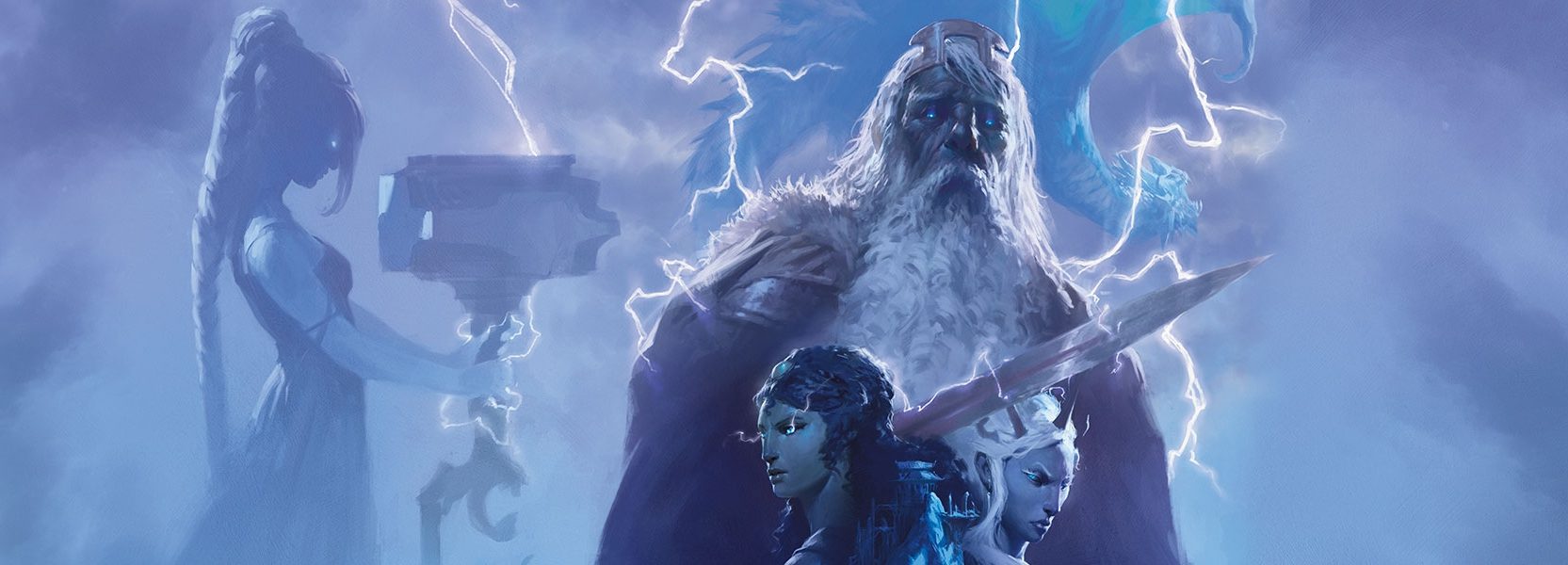 A FEW FLAWS
A FEW FLAWS
Despite its many virtues and improvements, Storm King’s Thunder does still have a few flaws. Let me preface this by saying that I don’t think any of these are particularly damning or serious. That said, here they are:
Sadly, as is the case with most sandboxes, much of the content in the book will never be explored or used in any single play through. The book is the exact same length as Out of the Abyss, for example, but since Storm King’s Thunder has tons of detailed content that will most likely never be seen by the players, it clocks in for less play time. You could even argue that this literally means you get less playtime for your money. You could also argue that, yes players who love free form exploring and side quests can eventually get around to seeing most of its content anyways, but it feels much less likely in an adventure like this. This will probably be a shorter play through for most groups.
The book does have a fair amount of typos in it, which is a bit surprising, seeing as how incredibly well organized it is content-wise. It’s not pervasive and it is, of course, completely superficial and will not affect your ability to run the game. It’s just noticeable.
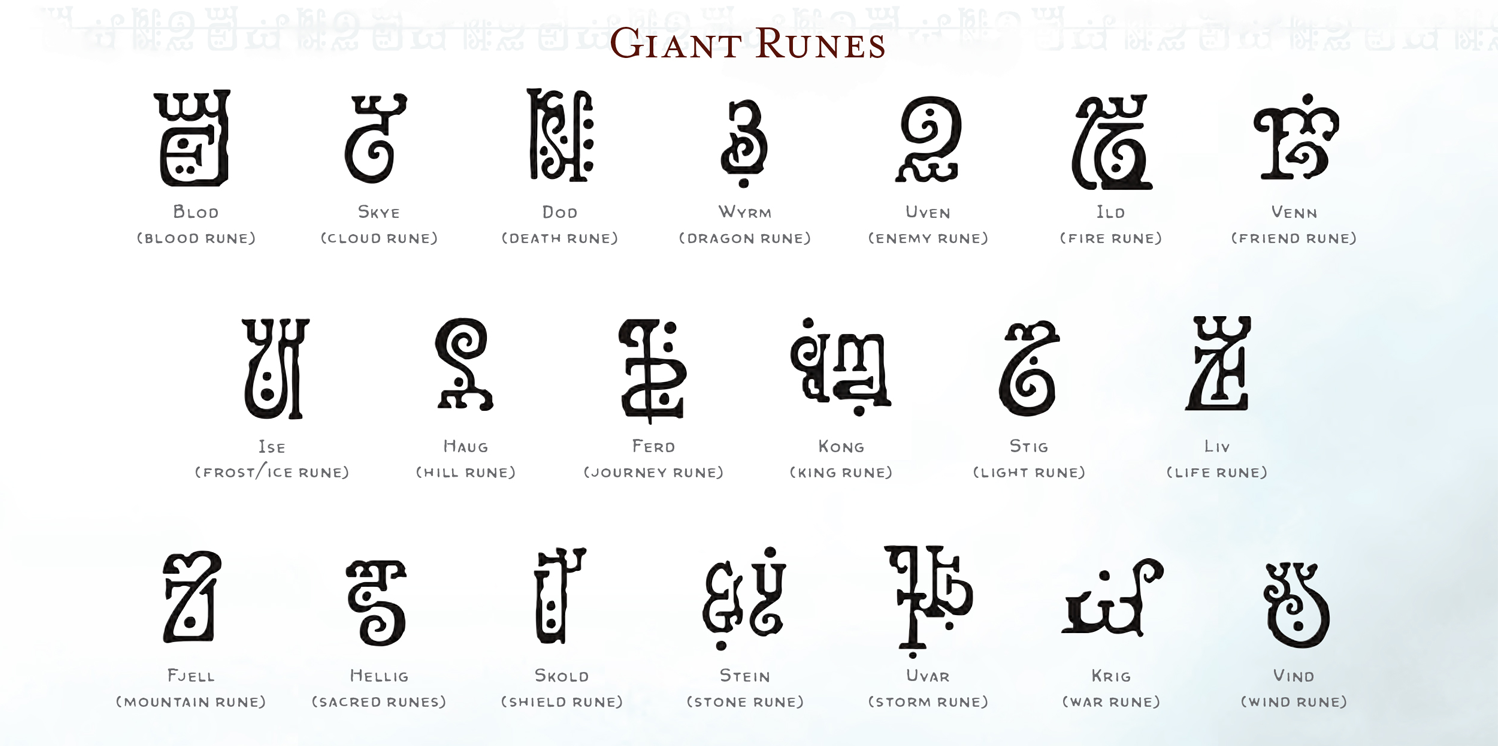 The whole “harness the power of rune magic” and “defeat giants by becoming giant” ideas are, in practice, pretty mediocre. I’m not implying that we were mislead in any way. I was just expecting a bit more, I guess. For instance, rune magic only exists, from a gameplay standpoint, within magic items in the back of the book and in scripted events during the adventure. There aren’t any additional options for players like what was shown in the “Prestige Classes and Rune Magic” Unearthed Arcana Wizards released last October.
The whole “harness the power of rune magic” and “defeat giants by becoming giant” ideas are, in practice, pretty mediocre. I’m not implying that we were mislead in any way. I was just expecting a bit more, I guess. For instance, rune magic only exists, from a gameplay standpoint, within magic items in the back of the book and in scripted events during the adventure. There aren’t any additional options for players like what was shown in the “Prestige Classes and Rune Magic” Unearthed Arcana Wizards released last October.
As for the “becoming giant” element of the game, I won’t spoil it here (you can read about it in the spoiler-laden sections below). For now I will just say that it feels very tacked on, like an afterthought. Early on, when Storm King’s Thunder was announced, it seems like it was implied that this idea was going to throw a very unique twist into a significant portion of the game. In reality, its just a fun little gimmick that shows up only once.
– THE ADVENTURES –
Here is a brief summary and my commentary on the specific adventures in Storm King’s Thunder. MAJOR SPOILERS are below, but if you are a DM wanting to know exactly what you and your players will be doing in this campaign, this section is for you.
***MAJOR SPOILERS BELOW***
Chapter 1: A Great Upheaval
The adventure begins with the players travelling to Nightstone, a small rural village that has just played victim to a cloud giant attack. As they explore the wreckage, they encounter looting goblins, destroyed buildings, surviving guards, and Zhentarim operatives. Just when things seem to be getting in order, a fleeing party of murderous orcs tries to take refuge within the village walls, prompting a possible showdown between the players, the Zhentarim, the pursuing elves, and the fleeing orcs. Later the players track down and rescue other surviving villagers in a nearby cave where they are held prisoner by goblins and ogres.
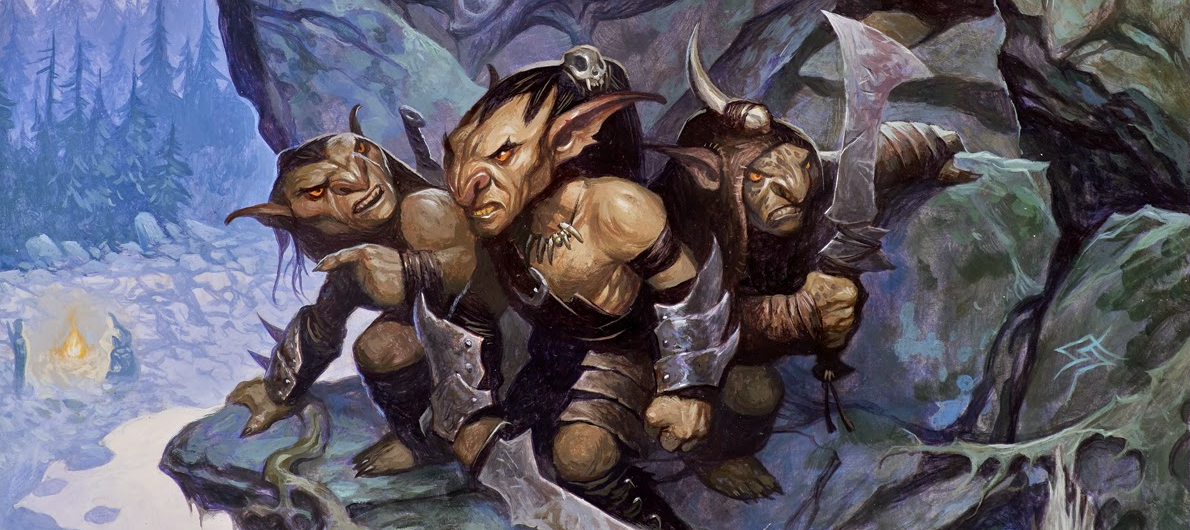 The chapter concludes with the players following up on one of three quests they receive from the villagers. A friendly cloud giant named Zephyros offers to transport them in his flying castle to their destination. Along the way the players have a run in with the Lord’s Alliance (mistaking Zephyros for a threat) and evil elemental air cultists.
The chapter concludes with the players following up on one of three quests they receive from the villagers. A friendly cloud giant named Zephyros offers to transport them in his flying castle to their destination. Along the way the players have a run in with the Lord’s Alliance (mistaking Zephyros for a threat) and evil elemental air cultists.
All in all its quite an exciting first chapter. There are so many different characters and groups represented, all with different agendas. The players have tons of opportunities to engage in combat as well as roleplaying. There are multiple times when the players must choose who’s side they are on or try to pit different groups against one another in order to survive. Its complicated, but in a fun and well presented way.
Chapter 2: Rumblings
Here the players are led to one of three different settlements: A frigid town called Bryn Shander in Icewind Dale, a lush temple farm called Goldenfields near the Dessarin Valley, or a bustling mercantile town called Triboar. Once they arrive and get situated, the location comes under attack by giants and the players must defend the settlement with the help of a handful of NPCs. After the battle is concluded, the surviving NPCs give the players quests which help drive the story forward.
Many of the NPCs here are quite interesting and the scenario does a good job of making the players actually care about them. This is due, in large part, to the fact that the players must control two characters at once during the attack. Some may find this daunting, but I think most groups will quickly adapt.
That said, I do think that this is the weakest chapter in the book (though that isn’t saying much). The three towns frankly struck me as being a bit mundane. It felt like a chore to read through all of the descriptions about each town’s blacksmiths, inns, temples, etc. Especially since many of these elements are extremely similar between them or if they are different, they are mundane enough as to not be of to much interest. Playing these scenarios will of course be quite different, since there will be plenty of combat, excitement, and interesting NPCs. However, compared to some of the inspired scenarios presented later in the book, these settlements come off as a bit redundant and mundane.
Add to this the fact that only one third of the text here will actually be used in the game and it all left me wondering if this chapter was really worth all the space it takes up in the book. I do acknowledge that it is a necessary chapter and that it can be fun, I just think it could have been more concise and less over bloated. Its not bad, its just that the whole rest of the book is better.
Chapter 3: The Savage Frontier
From the mundane to the absolutely sublime, we step out of Chapter 2 and enter Chapter 3. This is by far the best chapter in the book. Its main contribution is a massive list of over 160 locations spread across the northern region of the Sword Coast, complete with maps, random encounters, NPCs, and treasure. There are dozens and dozens of gems to be found here.
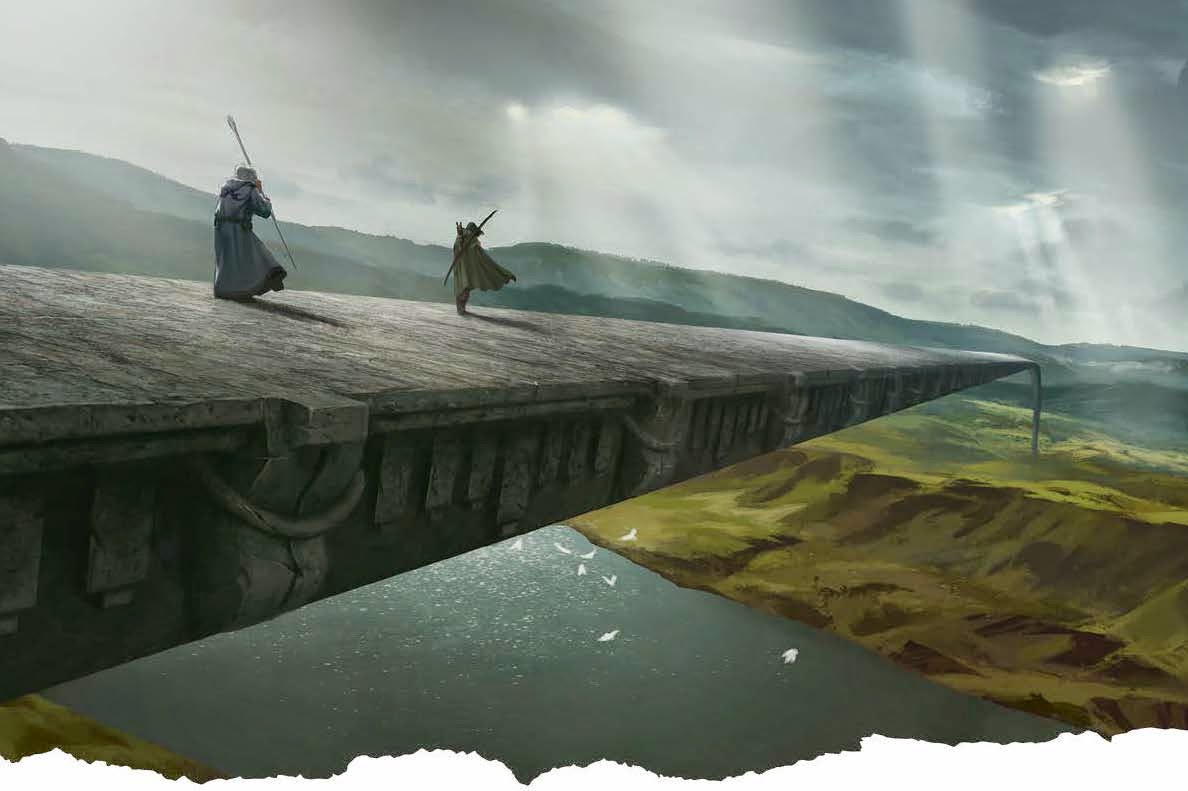 The scope and degree to which this brings the Sword Coast alive is truly inspiring and in the sections above, I touch on how this chapter creates the best 5th edition sandbox I’ve ever seen. Even the least interesting locations always have something noteworthy in them and the most interesting locations are good enough to inspire entire campaigns centered just around the NPCs and suggested encounters presented.
The scope and degree to which this brings the Sword Coast alive is truly inspiring and in the sections above, I touch on how this chapter creates the best 5th edition sandbox I’ve ever seen. Even the least interesting locations always have something noteworthy in them and the most interesting locations are good enough to inspire entire campaigns centered just around the NPCs and suggested encounters presented.
Much of the reason why this chapter is so successful is because each entry is quick and to the point(unlike chapter 2), giving you just enough information to get you started and let the DM pick up the creative reigns. I honestly think that the importance of this chapter is actually bigger than the adventure it is written for.
Chapter 4: The Chosen Path
Here the players meet a friendly frost giant named Harshnag, who leads them to consult with a divine oracle at an ancient temple. Deep within the frozen mountains of the north, the oracle explains how the players can combat the giant threat and gives them a quest to scour all corners of the map, looking for ancient artifacts. For each artifact they find, they gain the option to challenge a corresponding giant lord and steal its conch of teleportation to gain access to Maelstrom, the stronghold of the storm giants and King Hekaton’s court. A plot twist also occurs here in the arrival of a shapeshifting ancient blue dragon who has infiltrated the storm giant’s court. In a daring escape the players are offered aid from a mysterious band of dragon cultists in an airship.
Whew! This chapter has a lot going on in it. Besides providing a great and inspiring set piece for the campaign, it also delves deep into the lore of giants and their mythical idols. Rune magic is touched on here and it has some cool traps and roleplaying opportunities with the oracle, Harshnag, and the dragon cultists. It is a strong chapter overall, but it has a few issues:
As I foreshadowed above, I do think it is unfortunate that the players need only confront one giant lord to progress to chapter 10. That means that since only ONE out of the next FIVE chapters will be of use in your campaign, about 50 pages worth of content in the book is entirely wasted. It is true that in theory they can confront the other giant lords at some other point if they wish. But let’s be real. It seems unlikely that players will want to keep fighting giant lords once they get the opportunity to continue towards Maelstrom, which is a much more urgent and exciting place to take the story. If they had restructured the adventure to somehow require the players to confront multiple giant lords, I think they could have stretched the campaign out to level 14 or 15.
Some other minor quibbles are as follows: The chapter commits the cardinal sin of possibly giving the players a quest that cannot be completed without the use of another adventure book. I get that it’s optional and that it is fun to sometimes find references to other adventures here and there. Nonetheless, it’s kind of annoying to be given an exciting idea then immediately told that you can’t do it unless you pay another $29.95. Another thing that sticks out here is that the map seems to have been colored incorrectly. A minor problem to be sure, but it did throw me off since the location is described as being dark, cold and covered in frost, yet the map is drawn with a very bright and warm color scheme as if the floor were made of clean sandstone. No darkness or frost in sight. Even the painting of the oracle room contradicts the map’s depiction. No other map in the adventure had this problem for me.
Chapter 5: Den of the Hill Giants
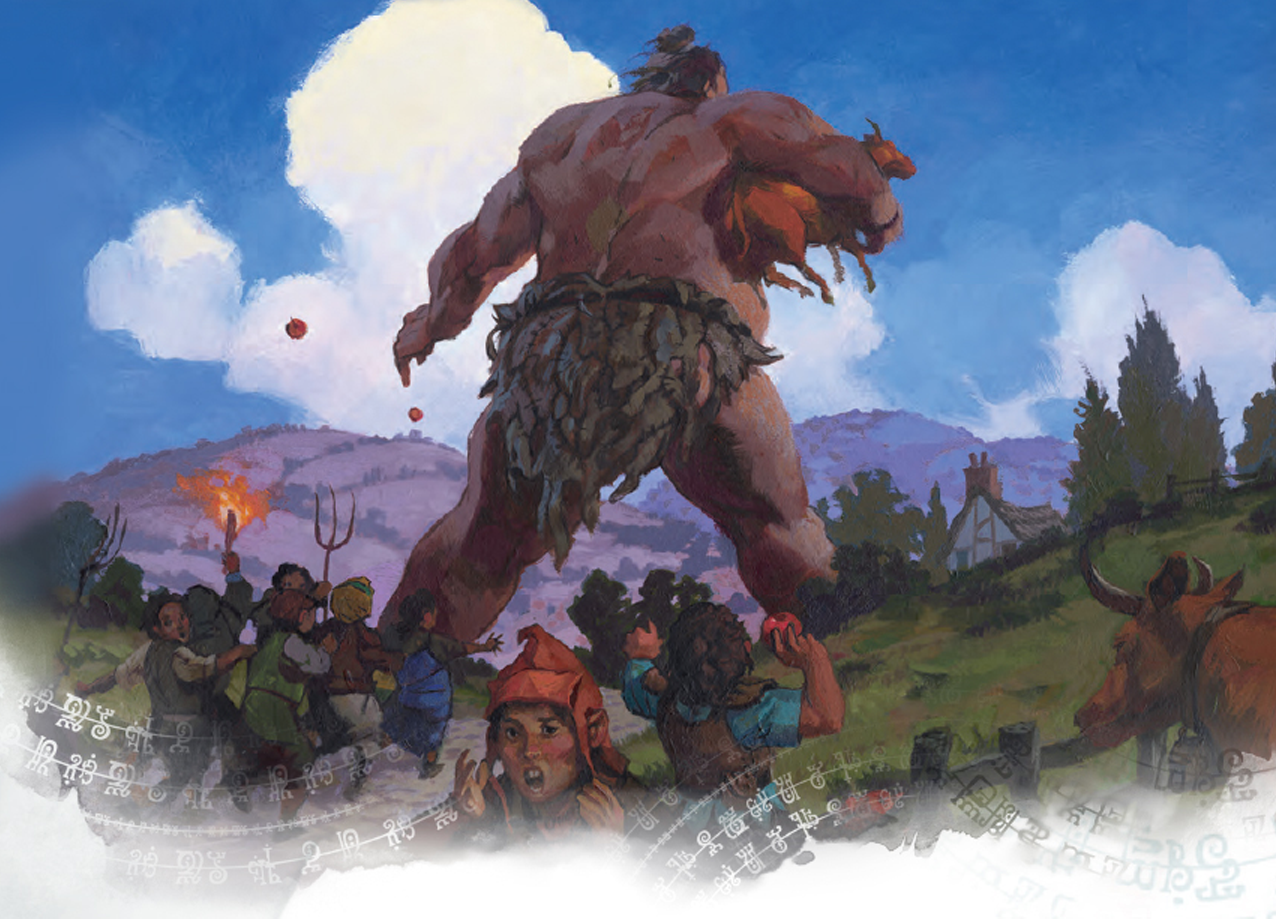 The first of the five giant lords that hold the key to Maelstrom is Ghum, a brutish and loathsome hill giant holed up on a pig farm. The scenario seems to lend itself well to a stealthy approach with tactical, isolated battles.
The first of the five giant lords that hold the key to Maelstrom is Ghum, a brutish and loathsome hill giant holed up on a pig farm. The scenario seems to lend itself well to a stealthy approach with tactical, isolated battles.
Overall this chapter is a good one, but the setting might be a bit underwhelming when compared to the other superior choices out there. For instance, after reading about Duke Zalto’s massive subterranean forge and his plans to engage in an apocalyptic war with dragons using the power of an ancient primordial… the idea of fighting hill giants on a pig farm is just kind of… meh. That aside, it’s a competently written scenario with plenty of tactical combat and stealth opportunities (not so much roleplay). If your players like combat and aren’t interested in politics, then this is for you.
Chapter 6: Canyon of the Stone Giants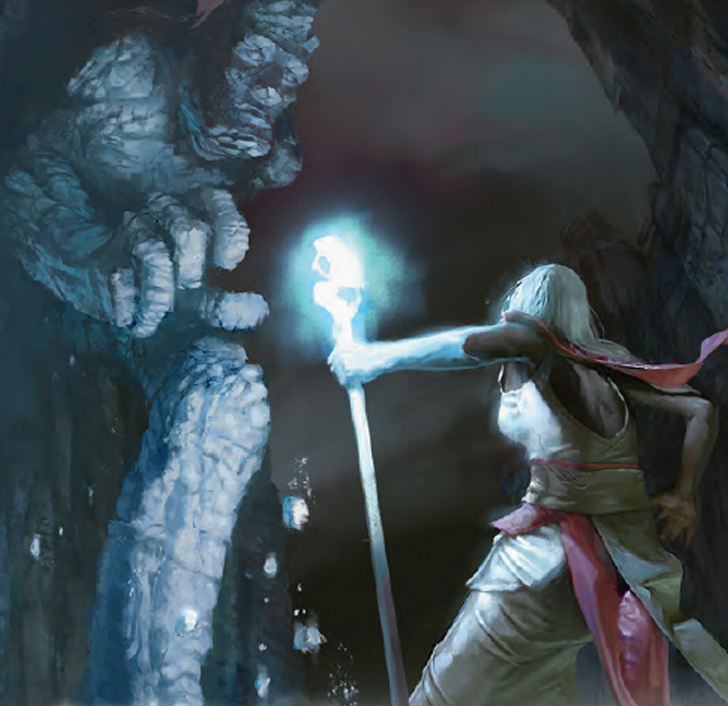
Here the players infiltrate a lair of stone giants called Deadstone Cleft. There are some interesting terrain features here and a couple of other creatures and NPCs to contend, with such as a band of Uthgardt barbarians and a roc that roosts just outside the canyon.
Now this is more like it! The imagery here is strong and the stone giants themselves are much more interesting and mysterious than their hill giant brethren. Some stone giants are neutral, preferring to live a life of artful mediation and stillness rather than crushing puny small folk. This presents some awesome roleplaying opportunities for a creative DM to play with. The barbarians also add another level of complexity and danger to the encounter.
Chapter 7: Berg of the Frost Giants
Travelling near the frigid waters of the Sea of Moving Ice, the players infiltrate the frost giant fortress of Svardborg. Just getting to the fortress is a challenge in itself and one that presents many options: Sail by boat? Fly by airship? Fly by griffon? Fly by dragon? Once there, the players have to contend with a wide variety of creatures and characters including winter wolves, manticores, dragons, harpies, a treacherous mage, and the frost giants themselves. All of this is made more complicated by the fact that the area is surrounded by frigid water and any craft they use to approach is at risk of being spotted.
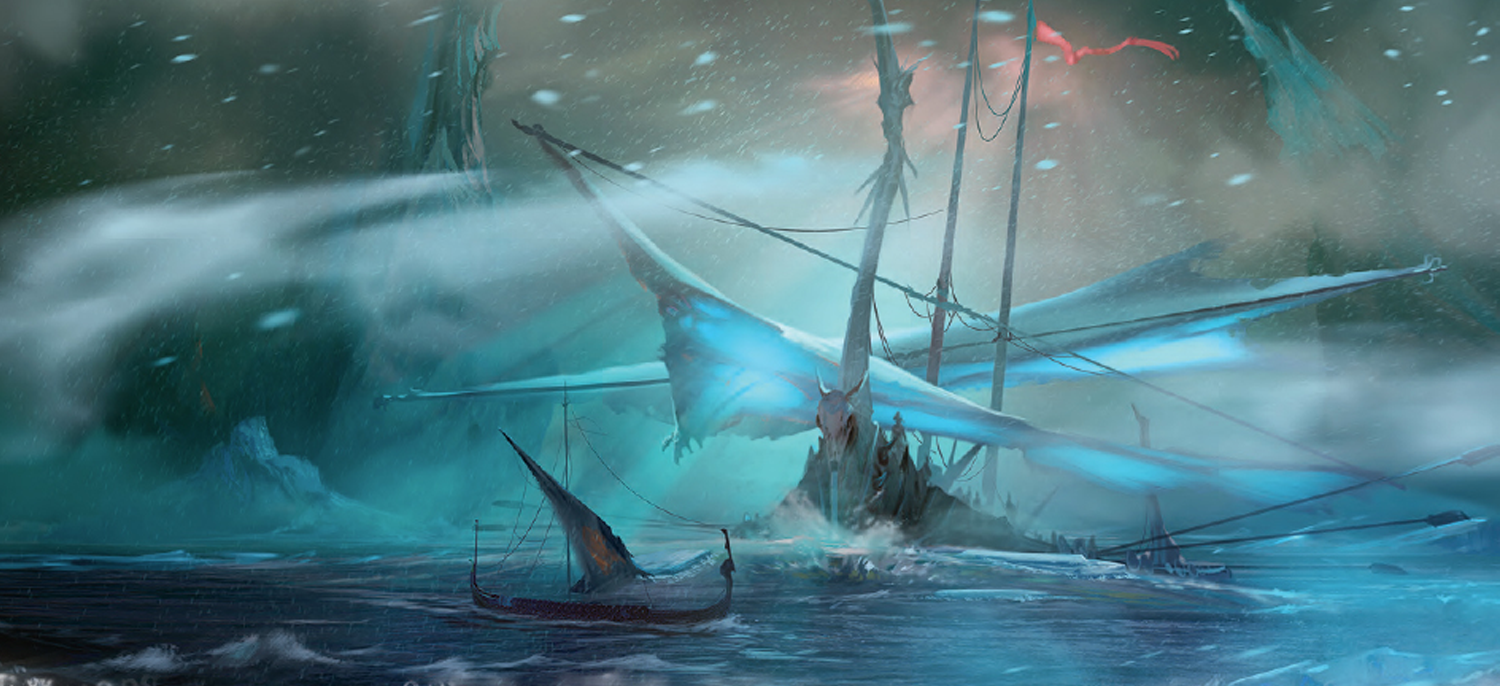 This is my favorite of the five chapters in this series because it is clearly and concisely laid out, but also gives a very large set of toys and options to play with. (Frost giants are also my favorite giant, so I may be a little biased) One of its highlights is that it plays up the ancient rivalry between dragons and giants, allowing smart players to play both sides against one another. Its aquatic elements as well as its potential for some ship boarding action add to the fun. The showdown between the players and Jarl Storvald can go many ways and will reward players for being intelligent and resourceful.
This is my favorite of the five chapters in this series because it is clearly and concisely laid out, but also gives a very large set of toys and options to play with. (Frost giants are also my favorite giant, so I may be a little biased) One of its highlights is that it plays up the ancient rivalry between dragons and giants, allowing smart players to play both sides against one another. Its aquatic elements as well as its potential for some ship boarding action add to the fun. The showdown between the players and Jarl Storvald can go many ways and will reward players for being intelligent and resourceful.
Chapter 8: Forge of the Fire Giants
This scenario sees the players infiltrate Duke Zalto’s enormous subterranean forge complex. Before they can set foot inside, however, the players must outwit the deceptive and murderous Yakfolk who control the village above Zalto’s lair. As the players descend deeper into the forge they have the opportunity to free slaves that keep the complex running and enlist their help. Eventually they face off against Duke Zalto and his hell hounds, thwarting his plans to reignite his mighty forge and reassemble the Vonindod, an enormous collosus with which he seeks to wage war against all of dragonkind. A party of drow make a special appearance here as well, throwing a curve ball into an already deadly situation.
This is the largest and most complex of the five chapters in this series. It is also quite dark and mature, in comparison to the others. It has an almost concentration camp type feel, what with slaves being beaten and worked to death throughout the whole area. It all may be a bit depressing for some.
Now that aside, it is another very well crafted scenario and there are plenty of opportunities for smart players to use roleplaying to their advantage here. It is, however, a more challenging scenario to run from a DM’s perspective, with a lot of moving parts and interconnected factors at play. In the hands of a skilled DM, this can be perhaps the most intricate and tactical scenario in the whole book, but it takes a sizable amount of prep time.
Chapter 9: Castle of the Cloud Giants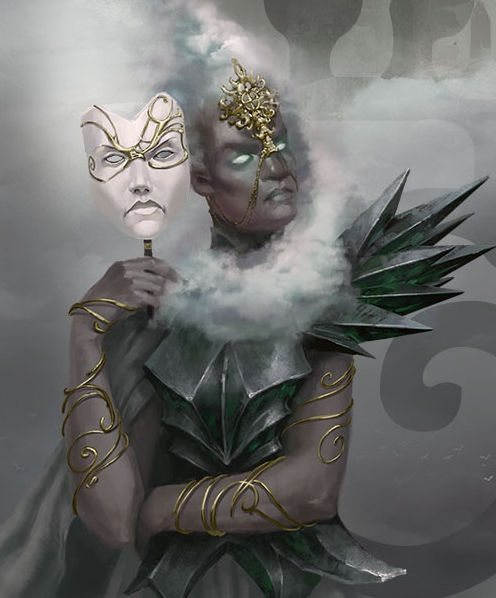
The final chapter in this series involves the players infiltrating Countess Sansuri’s flying castle. The Countess is vain but sociable, lending this chapter quite well to social roleplaying. Players might fly aboard and ask for a peaceful audience with her, then at the opportune moment strike at her vulnerabilities. Hazards include Sansuri’s simulacra aarakocra, cloud giants, griffons, air elementals, invisible stalkers and even animated chess pieces! The characters also have the opportunity to seize the castle for themselves if they defeat all of its inhabitants.
This is my second favorite chapter in this series. Its easier to run than the fire giant scenario, it has more interesting NPCs than the hill and stone giant scenarios, and it plays with the giants vs dragons theme again, which can be exploited by the players to give them an advantage. I like the “whimsical arcana” feel to the whole thing. Its sort of like a castle from Alice in Wonderland. If your group has a lot of magic users, consider steering them towards this chapter. There plenty of magic items, scrolls, and spells to be found here.
Chapter 10: Hold of the Storm Giants
After defeating one or more giant lords, the players arrive at the underwater court of the Storm King himself. Maelstrom represents the most challenging piece of social roleplaying in the whole adventure. Surrounded by flooded chambers, dangerous sea creatures, and powerful storm giants, the players must convince princess Serissa to trust them about her missing father, King Hekaton. This is made difficult by the fact that those closest to her, including her advisor Iymrith and her two sisters, are evil and full of deceit. The players will have to be socially clever and resourceful to avoid getting into big trouble here.
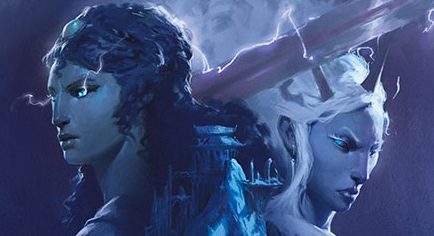 This is another very strong chapter with interesting political drama and an awesome setting. It is quite possible (but unlikely) to complete this with very little combat, which may be a disappointment for some. It challenges the players to remember what specific information they have learned previously about the NPCs and their various motives. Players armed with a good memory and a sensitivity to the social clues you drop as the DM will have an advantage. The underwater theme is also quite fun and there are a few nice touches included for the sake of immersion, such as the anemone chests, giant clams, and crystal windows. Even without combat, the setting itself can be deadly if not handled correctly.
This is another very strong chapter with interesting political drama and an awesome setting. It is quite possible (but unlikely) to complete this with very little combat, which may be a disappointment for some. It challenges the players to remember what specific information they have learned previously about the NPCs and their various motives. Players armed with a good memory and a sensitivity to the social clues you drop as the DM will have an advantage. The underwater theme is also quite fun and there are a few nice touches included for the sake of immersion, such as the anemone chests, giant clams, and crystal windows. Even without combat, the setting itself can be deadly if not handled correctly.
I do wish that there were a few more opportunities throughout the campaign to learn about the situation at Maelstrom before travelling there. As it is, the only sizable source of information about it is the Oracle at Annan’s Temple, who is basically just a talking head that info dumps the necessary information on the characters. I feel there is a real risk of the players getting to Hekaton’s court and being a bit lost about what to say.
Chapter 11: Caught in the Tentacles
This chapter is jam packed with dramatic plot points. After gaining Serissa’s trust, she tasks the players with helping track down her father. The players will have to wander a bit, investigating clues and leads which can be handled as specifically or as vaguely as the DM likes. They end up infiltrating a waterborne gambling ring run by an operative from the Kraken Society. Under interrogation, he tells the players that Hekaton has been sequestered aboard a ship that sails in the Trackless Sea to avoid detection. The players use one of many methods available to reach the ship and fight their way on board. Once Hekaton is freed, they might return back to Maelstrom or experience an epic showdown with a mighty kraken.
 This chapter provides a welcome change of pace to the dungeon-crawl, room-to-room style found in the previous six chapters. The adventures here are also shorter and more varied, with a fair amount of travelling. This gives the players the opportunity to gain another level or two in their travels before the finale against the dragon. I like that this chapter rewards the players for establishing contacts and resources throughout the game. For instance, depending on how much wealth and/or friends the players have amassed, sea travel can be done in a variety of ways including by boat, airship, dragon, or even flying castle! This chapter feels much more cinematic and free form than its predecessors, even allowing the possibility for King Hekaton to die.
This chapter provides a welcome change of pace to the dungeon-crawl, room-to-room style found in the previous six chapters. The adventures here are also shorter and more varied, with a fair amount of travelling. This gives the players the opportunity to gain another level or two in their travels before the finale against the dragon. I like that this chapter rewards the players for establishing contacts and resources throughout the game. For instance, depending on how much wealth and/or friends the players have amassed, sea travel can be done in a variety of ways including by boat, airship, dragon, or even flying castle! This chapter feels much more cinematic and free form than its predecessors, even allowing the possibility for King Hekaton to die.
Chapter 12: Doom in the Desert
Once Hekaton is back in Maelstrom, or news of his death has reached there, it becomes clear that Iymrith, the ancient blue dragon that infiltrated his court, must answer for her treachery. An alliance between storm giants and the small folk is forged and the two march upon the dragon’s lair. The players are also each given a potion of giant size to make things more interesting. The bulk of this chapter is a battle royal staged in a huge abandoned amphitheater between the storm giants, players, and the dragon. This obviously has the potential to be deadly for a number of players and NPCs, so they will have to work together and use tactics to survive. Iymrith has a host of gargoyles at her command and the players will also potentially have to deal with yuan ti, air elementals, and even a mummy lord! Iymrith also fights on her home turf and thus has access to her lair actions and a few traps and defense mechanisms to keep the battle interesting.
This is the shortest chapter in the book, which is appropriate being that it’s basically just a giant battle(no pun intended). It’s a fun and satisfying action-movie-type blowout designed to end the story with a bang. Teaming up with the storm giants also gives the players another opportunity to control NPCs in combat. Again, that may be daunting for some, but for others controlling a storm giant will be a welcome end-of-campaign reward. And hey, all good campaigns have to end with the party slaying a dragon right? Classic!
Appendices: A – D
 The appendices contain a few necessary add-ons to support the main campaign. Appendix A: Linked Adventures is a guide on how to connect other Wizards adventures with Storm King’s Thunder. Crossovers are particularly strong with Hoard of the Dragon Queen and Princes of the Apocalypse. Appendix B: Magic Items is exactly that: magic items. It includes a number of rune magic items made specifically for this adventure. It is a bit disappointing that they don’t have an item for every single rune, but the ones that are there are at least mildly interesting. Appendix C: Creatures includes all the necessary stat blocks including ones for Maegera the Dawn Titan, uthgardt shamans, tressyms, and yakfolk. Most interestingly, though, it also includes some expanded options for giants, giving them some new powers and actions to keep them fresh and cut down on repetition. After all, you will be facing a lot of giants in this adventure. Appendix D: Special NPCs contains stats for the NPCs you will be handing out to the players during special scenarios. Each stat block includes a nifty little Roleplaying Information section and full color portrait, making it easier for them to bond with these characters and create unique behaviors for them.
The appendices contain a few necessary add-ons to support the main campaign. Appendix A: Linked Adventures is a guide on how to connect other Wizards adventures with Storm King’s Thunder. Crossovers are particularly strong with Hoard of the Dragon Queen and Princes of the Apocalypse. Appendix B: Magic Items is exactly that: magic items. It includes a number of rune magic items made specifically for this adventure. It is a bit disappointing that they don’t have an item for every single rune, but the ones that are there are at least mildly interesting. Appendix C: Creatures includes all the necessary stat blocks including ones for Maegera the Dawn Titan, uthgardt shamans, tressyms, and yakfolk. Most interestingly, though, it also includes some expanded options for giants, giving them some new powers and actions to keep them fresh and cut down on repetition. After all, you will be facing a lot of giants in this adventure. Appendix D: Special NPCs contains stats for the NPCs you will be handing out to the players during special scenarios. Each stat block includes a nifty little Roleplaying Information section and full color portrait, making it easier for them to bond with these characters and create unique behaviors for them.
***END OF SPOILERS***
Is Storm King’s Thunder the best 5th edition adventure Wizards has ever done? Well, I can tell you that from an organizational and technical standpoint, it certainly is. It successfully improves upon the mistakes of its predecessors and delivers the best version of the Sword Coast yet. I think it’s safe to say that it’s better than Tyranny of Dragons and Princes of the Apocalypse. Out of the Abyss and Curse of Strahd are harder to compare, because they attempt to achieve very different things and offer different styles of play. That aside, I do think you could easily make a compelling argument for Storm King’s Thunder taking the top spot, solely on its organizational merits, its level of ease for the DM, and its truly sandbox type gameplay. Rest assured that if you choose to dive into this world, you’ll get to experience one of the finest adventures on the market for 5th edition today.
GET THIS IF:
- Your group loves treasure and magic items.
- Your group is creative and can run with a sandbox type campaign.
- Your group loves side quests.
- You are interested in giants and dragons.
- You are interested in exploring the Sword Coast as a setting.
DON’T GET THIS IF:
- Your group prefers a more linear story experience.
- You are looking for something with a more specific theme such as gothic horror.
- You find treasure, money and magic items to be a pain to manage.
- Your players don’t enjoy social or political roleplaying.
If you need help running Storm King’s Thunder, check out Power Score’s blog here for great tips and insights!


